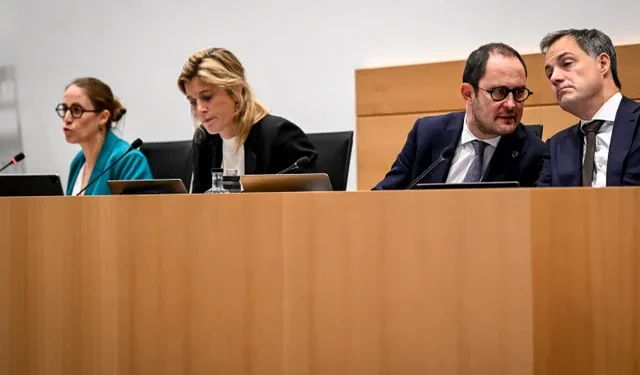The fact that the perpetrator of Monday evening’s attack in Brussels has been the subject of several reports and meetings with the security services in recent years proves that the information has circulated and that it has been acted upon. This was said by Minister of Justice Vincent Van Quickenborne (Open VLD) in Parliament on Wednesday evening.
45-year-old Tunisian Abdesalem Lassoued shot dead two Swedish football supporters in Brussels on Monday evening. The man stayed in our country illegally, but did not comply with the order to leave the territory and thus lived “below the waterline”, Prime Minister Alexander De Croo previously indicated. The question remains how that could happen.
‘Was on the radar’
On Wednesday afternoon it became clear in Parliament that the man was the subject of a meeting of the Local Task Force in Brussels in June 2022, a body where State Security, the police and the public prosecutor’s office, among others, exchange information and monitor radicalized people. In addition, in recent years there have been reports of a prison sentence in Tunisia, not for terrorism but for assault and battery, and of online threats against a resident of an asylum center in Arendonk. According to Van Quickenborne, the latter had to do with drug trafficking.
And in 2016, our country already received information about Lassoued’s radicalized profile through a foreign security service, in this case in Italy. During that period, the security services were inundated with such information, according to Van Quickenborne, but in addition, it was information from one unconfirmed source and there was no information indicating that the man was on Belgian territory.
There was contact with Belgian telephone numbers, but who was behind this could not be traced because they involved anonymous prepaid cards. The Tunisian was therefore on the radar of the security services, several MPs concluded. However, he did not end up on the OCAD terror list and was therefore not known for extremism or terrorism.
Prime Minister Alexander De Croo emphasized that the man did indeed come into contact with the police and that there were questions about his behavior. “But was he on the radar as a danger to society? No. The pieces of the puzzle have been put together several times.” Minister of Justice Vincent Van Quickenborne (Open VLD) agreed. “He was on the radar. But that doesn’t mean someone is automatically a violent extremist.”
The Liberal Deputy Prime Minister emphasized that the conditions had not been met to end up on the terror list. According to the law, there must be an extremist ideology, but also violence or incitement to violence, according to Van Quickenborne. The fact that the man was not on the OCAD list does not mean that the system had failed, the minister emphasized. “The reports (..) were not simply lumped together and not done with. The structures were used (..) Being known as radical is insufficient to put someone on the list.”
According to Van Quickenborne, the fact that Lassoued was the subject of several reports and meetings proves “that the information has circulated and that action has been taken.” “All elements that pointed towards radicalization have been investigated by our services,” Minister of the Interior Annelies Verlinden (CD&V) also emphasized. “There is not a single indication that has not been followed up.”
This article is originally published on bruzz.be




